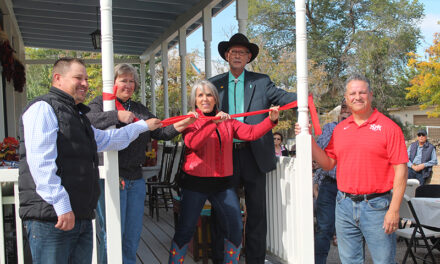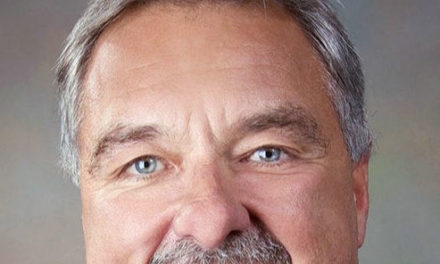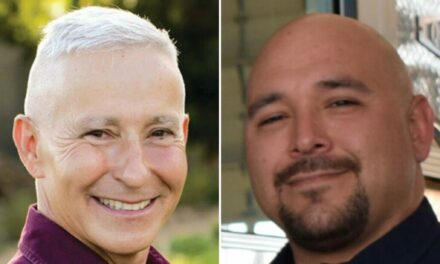Valencia County residents woke up Monday morning to a seemingly cloudy and hazy day — the product of two gigantic fires in eastern Arizona.
As the sun rose over the Manzano Mountains, it looked liked an orange ball in the sky. The Manzano Mountains have been shrouded in the haze and obscured from the view of Rio Grande Valley residents.
Also, there was a distinct odor of smoke throughout the air.
The smoke is being produced by the Rodeo and Chediski fires, which have now collided with each other, burning near Show Low, Ariz.
According to Geoffry Bogorad, a forecaster with the National Weather Service in Albuquerque, 80 percent of New Mexico is currently being covered by haze from the fire. Only the extreme southwestern region of the state is not experiencing hazy conditions.
Winds are blowing smoke from the fire in a clockwise pattern — north to Farmington and back down through the Rio Grande Valley, Bogorad said.
“Expect hazy conditions until Wednesday — probably the start of shower activity, which will continue to the end of the week,” he said.
As of Monday, the Rodeo fire burned more than 330,000 acres of ponderosa pine forest, including 115 structures within. “With low relative humidity and low fuel moistures in the area, the Rodeo fire is expected to continue to grow significantly in size,” reported the U.S. Forest Service.
The Chediski fire, which was a separate fire until Sunday afternoon, joined the Rodeo, fire making it one large fire. It had burned more than 100,000 acres by Monday and will continue to grow if weather conditions remain windy and dry.
The smoke coming into the area could possibly irritate individuals with asthma and emphysema, said Michael Stuckey, fire information officer for the United States Forest Service.
“If a person has asthma (or any other breathing disorder), and they’re going to be naturally bothered by the air. They might want to leave the area until it’s over. They need to make the choice and get out,” Stucky said.
However, in the case where someone can’t leave, Stuckey said he recommends people stay indoors and turn on their filtration systems, if they have them, or their swamp coolers. He added that individuals with health concerns need to consult their doctors.
Dr. Richard Madden at Presbyterian Health Care in Belen said he has not seen an increase in health problems due to the smoke haze as of Tuesday morning.
But he warns that “people with asthma need to be careful, and, if they show any early signs of trouble breathing, they need to take their medicine,” Madden said.
“Another way the smoke haze can affect people is in their eyes,” he said. “They need to use an artificial-tear eye drop to replace the moisture in their eyes.”
The Yellowstone fire of 1998, which was actually a combination of many fires, scorched 793,800 acres in the span of three months. In a matter of days, the Rodeo/Chediski fire has burned more than 330,000 acres, which is equal to approximately 477 square miles.
Stuckey said smoke and ash from the Yellowstone fire drifted as far east as Chicago, covering a distance of 1,137 miles. Valencia County is approximately 180 miles east of Show Low and is linked to the town of 8,000 people via U.S. Highway 60.
As of Monday, 37 crews, from as far away as Alaska and Puerto Rico, were fighting the fire, Stuckey said.
Stuckey visited with some of the firefighters and noted seeing one man he described as looking “punch drunk.” When he asked the man how efforts were proceeding, the man answered, “A monster is knocking on the door — and beating it down.”
If the intensity continues, there is a good chance Show Low will be consumed by the growing fire, which is only miles away from the town, according to Stuckey. A fire as big as the Rodeo/Chediski is creating its own weather system, with flames climbing 400 feet and 2,000 fire columns reaching an elevation of 30,000 feet.
The columns can create winds up to 140 miles per hour, which are comparable to those created by hurricanes and tornadoes.
















